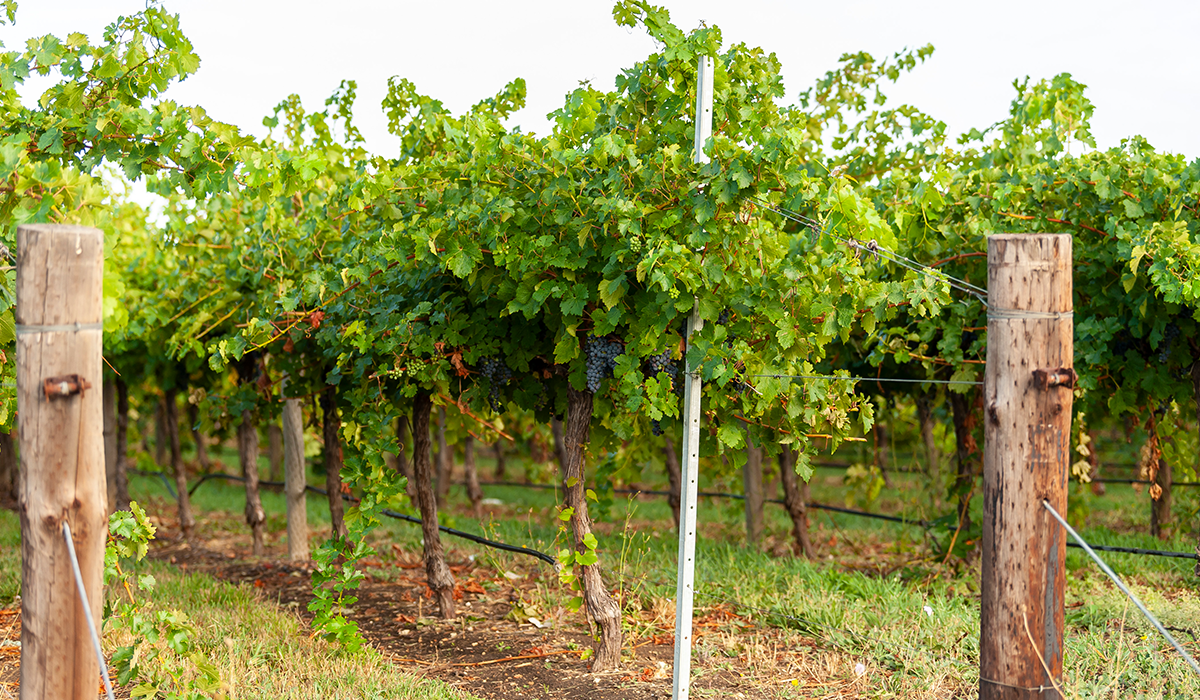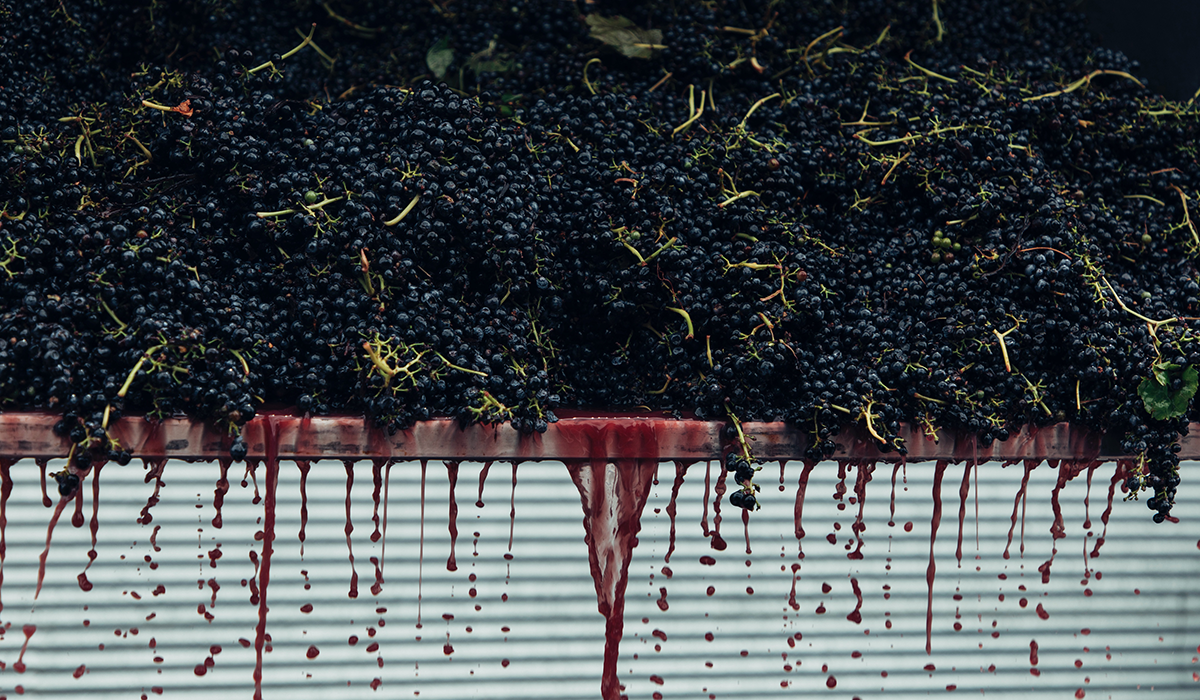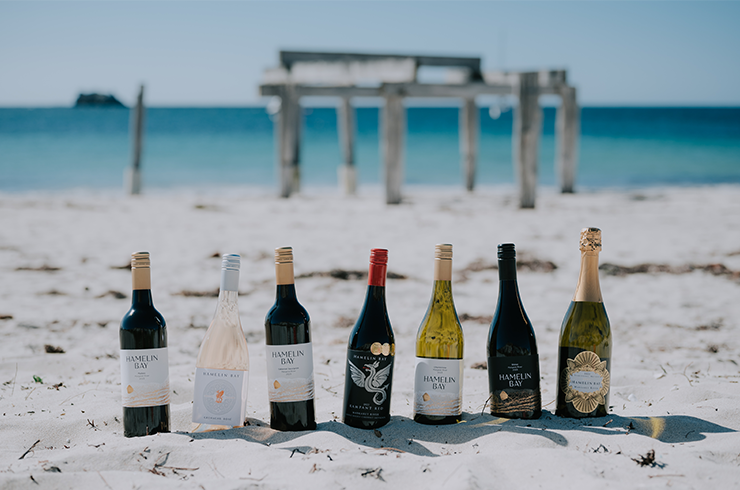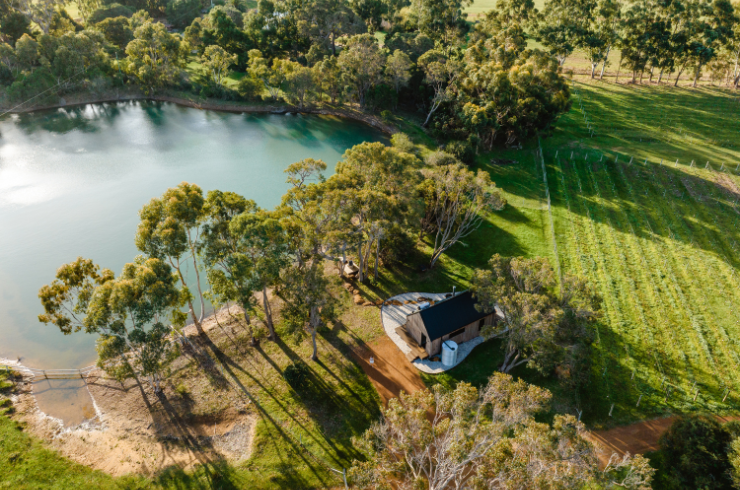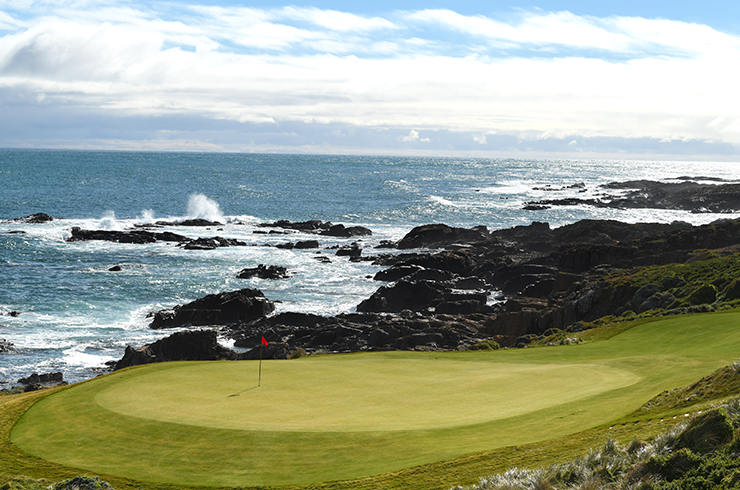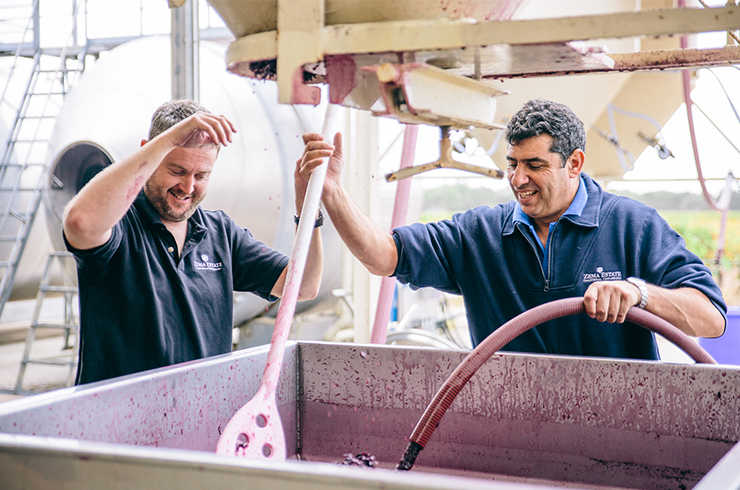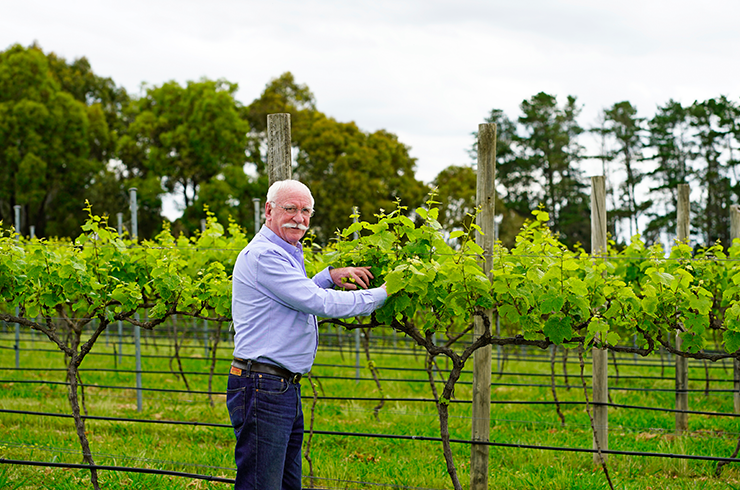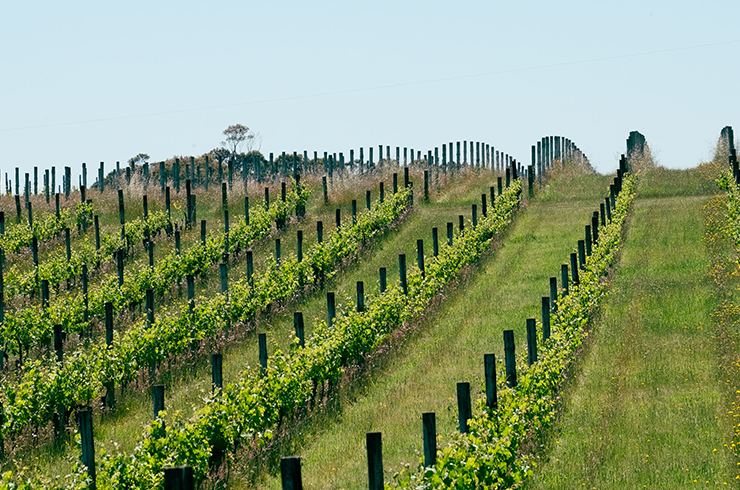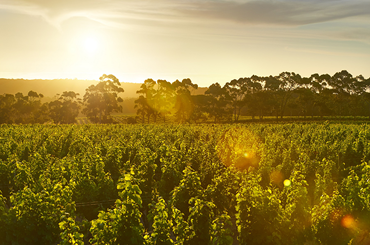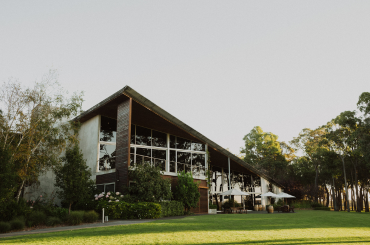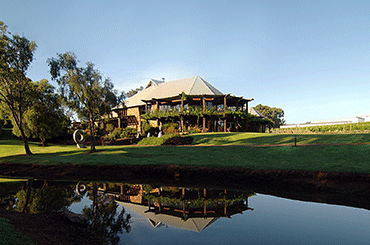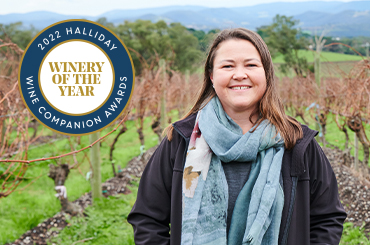Go to section: Cabernet sauvignon tasting characteristics | Origins of cabernet sauvignon | How to pair food with cabernet sauvignon | Serving temperature for cabernet sauvignon | The best Australian cabernet sauvignon regions
Cabernet sauvignon wine
Cabernet sauvignon is a truly noble red wine. Originally from Bordeaux in France, the popularity of this varietal was such that there were soon plantings worldwide.
Cabernet sauvignon is often blended with varieties such as merlot and shiraz, but straight-up examples are nevertheless worthy of a place in any wine lover’s cellar. That’s partly to do with its complex flavour profile, but also because it’s one of the most ageworthy wine varieties.
Cabernet sauvignon tasting characteristics
Cabernet sauvignon is known for its deep colour, firm structure, rich fruit and herbal notes. Often tannic in its youth, this is a wine that improves with age and typically hits peak drinkability after three or four years. When tasting blind, you can sometimes tell a cabernet sauvignon by the ‘doughnut’ effect it can have on the palate – filling out the mid-palate is one reason it’s popularly blended with varieties such as shiraz and merlot.

Cabernet sauvignon has aromas of cedar, cassis and currant, and often a defining hint of mint. It is also known for a green capsicum note attributed to an organic compound group called pyrazines.
To compare the characteristic variations between Old and New World cabernet regions, the grapes from Bordeaux provide a herbal base, with flavours of graphite, violets and tobacco. In contrast, cabernet from California is more fruit-forward, with black cherry, liquorice and a touch of vanilla.
Origins of cabernet sauvignon
In comparison to other noble wine varieties, cabernet sauvignon had a relatively slow start, only emerging in the late 18th century when the grape is believed to have formed due to a spontaneous crossing of cabernet franc and sauvignon blanc. This variety is particularly partial to the growing conditions offered by the alluvial soils in Bordeaux and is the classic red grape of the region.Today, cabernet sauvignon is the world’s most widely planted wine grape, grown across Eastern Europe, cooler regions of Italy and parts of Spain. It is also spread across the Southern Hemisphere, in Australia, Chile, Argentina, New Zealand and South Africa.
Cabernet sauvignon found its way to Australian shores thanks to James Busby, a wine pioneer who imported the grape in 1832. The first crops were used for blending, but winemakers and viticulturists were quick to embrace cabernet sauvignon as a variety in its own right.
How to pair food with cabernet sauvignon
Cabernet sauvignon is a wine that cries out for food. Thanks to its acidity, tannins and alcohol, if there ever was a variety made better by a feast, it’s cabernet. A rich meat dish is a perfect pairing. Think a favourite cut of steak or a slow-cooked beef ragu. Hard cheeses, like an aged gouda or cheddar, also match well to cabernet.
Serving temperature for cabernet sauvignon
The ideal serving temperature for cabernet sauvignon is 16–18 degrees.Sign up to view these tasting notes and ratings
By becoming a member of Wine Companion, you'll have access to the largest database of wines in Australia.
Australian cabernet wine regions
Discover the different cabernet styles and characters that come out of Australia’s leading cabernet-producing regions.
Coonawarra
A majority of the grapes grown in Coonawarra go into varietal wines. Expect a medium-bodied style with a supple palate and balanced tannins. The range of fruit flavours in the wine is largely influenced by the vintage and winemaker, covering cassis, blackcurrant, redcurrant, blackberry and mulberry in youth, developing into distinctive earthy, savoury and spicy characteristics with age.
Margaret River
Margaret River’s history of producing top cabernet sauvignon is relatively new, stretching back a little more than 50 years, so how it has emerged as a cabernet powerhouse can be attributed to the environment being one of the best in Australia for producing this varietal. A Margaret River cabernet’s style will differ slightly depending on its subregion of origin, including variations in texture, weight and mouthfeel as well as flavour.
Barossa Valley
Some of the greatest wines of this region (notably those pioneered by Penfolds’ Max Schubert) have used cabernet as a part of a blend with shiraz. James Halliday says of Barossa cabernet: “In cooler vintages, it features rich and ripe fruit, which provides an ample base for the confident use of oak; the result is an easily accessed and enjoyed wine, which will repay with cellaring.”
McLaren Vale
Cabernet sauvignon from McLaren Vale is favoured for its easy-drinking opulence. Typical characteristics are blackberry, bay leaf, cassis and dark chocolate.
Clare Valley
Cabernet sauvignon is one of the great red wine grapes of the Clare Valley. In James’ words: “This region makes strong, bold, powerful and earthy cabernet sauvignon.”
Yarra Valley
Cabernet sauvignon is suited to vintages that are temperate across the growing season, as it is a later-ripening variety. That means site selection in Victoria’s Yarra Valley is all-important. When at its best, a Yarra Valley cabernet has a blackcurrant aroma with a supple, silky texture and fine tannins.
Langhorne Creek
Langhorne Creek often gets overlooked in discussions of Australia’s best red wines, and that’s a shame, as flowing from its wineries are some exceptional examples. The quality of its red fruit is so great, in fact, that neighbours such as the Barossa Valley look to it as a wellspring for their wines. Cabernet was first planted in this region in the 1800s by Bleasdale founder Frank Potts, and it has been producing flavoursome cabernet with red and black fruits and herbal complexity ever since.All quotes and facts in this guide are from James Halliday’s Varietal Wines.
Image credit: Yalumba and Vasse Felix.
